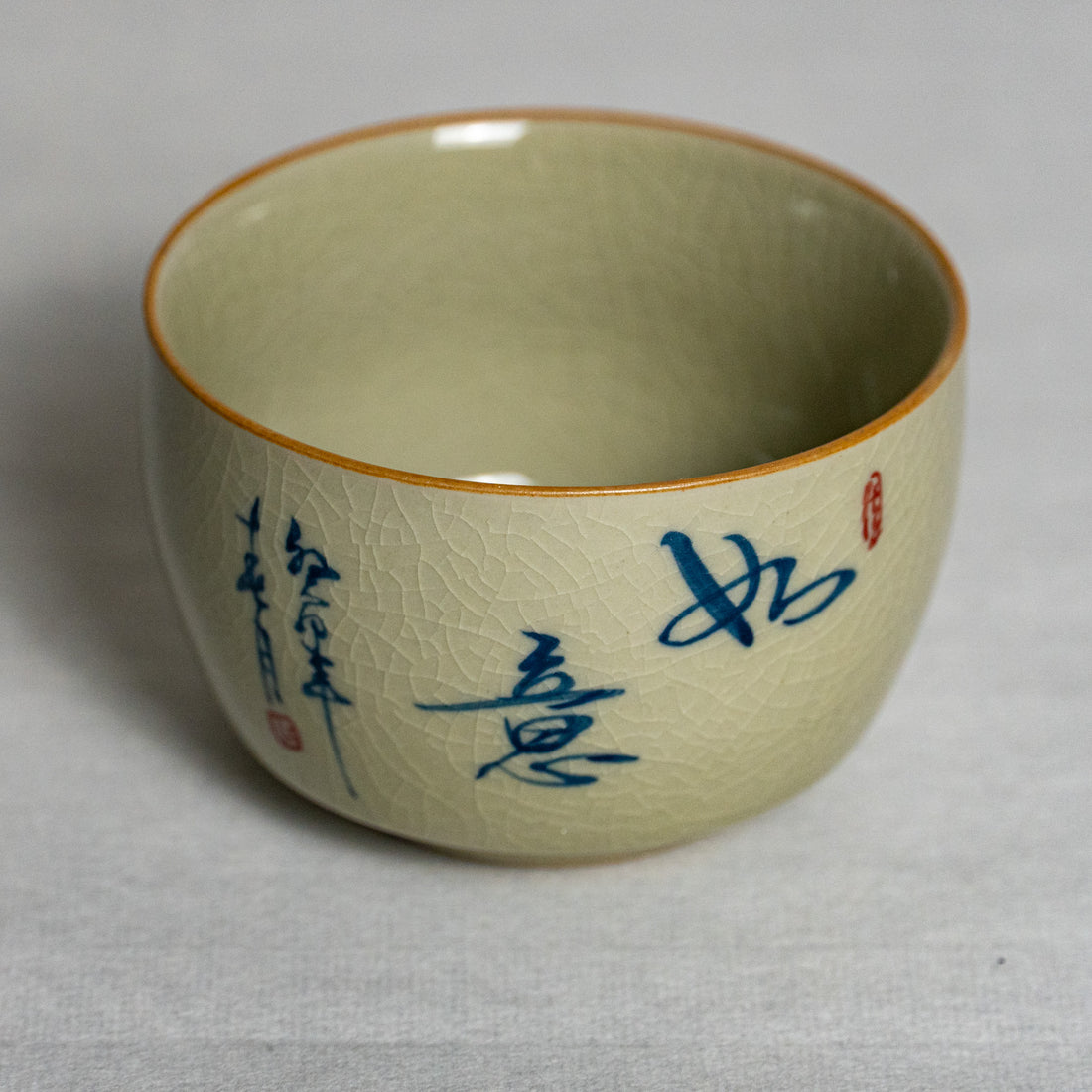If flaws can be seen as a form of beauty, then the crazing of Ru Yao porcelain stands as a testament to this in the world of ceramics.
Originally, crazing was considered a defect in porcelain. However, its natural formation, ever-changing patterns, and uniqueness have captivated many. Crazing is also one of the defining characteristics of Ru Yao.
Many enthusiasts of Ru Yao have questions about its crazing. Let's address them one by one:
1. Why does Ru Yao develop crazing?
Ru Yao undergoes high-temperature glazing and is fired twice. The first firing is for the bisque, followed by a glaze firing. Both the clay body and glaze shrink upon cooling, and artisans precisely calculate this differential shrinkage to produce the crazing. There are various types of crazing patterns in Ru Yao, such as ice crackle, fish roe, and cicada wing patterns. Of course, not all pieces will develop crazing. When not in use, it's best to place the Ru Yao teaware near a window or in a well-ventilated area. The temperature difference between day and night in these locations can promote further crazing.
2. What value does crazing bring to Ru Yao?
- Tactile Value: The crazing in Ru Yao enhances the tactile experience of using the teaware. The temperature changes from brewing and drinking tea can induce further crazing.
- Aesthetic Value: The crazing patterns, formed by the tension between the clay body and glaze, are diverse and include patterns like crab claw, ice crackle, and linear patterns. The angle of the crazed lines produces a mica-like visual effect, often referred to as "fish scale crazing.
3. Is it still Ru Yao if it doesn't craze?
Not all pieces that craze are Ru Yao, and not all Ru Yao will craze. For instance, the Song Dynasty narcissus basin in the Taipei National Palace Museum is a Ru Yao piece that doesn't show crazing.
4. What's the difference between "Ru Yao crazing" and "Ru Yao patterns"?
Crazing in Ru Yao is the result of tension in the glaze caused by the clay body, leading to cracks in the glaze. Once tea seeps into these cracks over time, it forms the tea-colored patterns we see.
5. How long does it take to see the crazing effect?
It varies. Some pieces might start showing crazing in as little as half a month, while others might take up to six months. On average, a good crazing effect can be achieved in three to five months with regular use.
6. Which tea should be used for Ru Yao?
Different teas can produce different colors in the crazing lines. Green tea, for instance, produces the most beautiful lines, while oolong tea produces a personal favorite color for many. Black tea and raw Pu'er produce brown lines, while ripe Pu'er produces black lines.
7. How to promote faster crazing in Ru Yao?
Remember, the goal is to enjoy tea and not just to induce crazing. Using the teaware regularly with a normal mindset is the key.
8. What if the cup looks dirty after some time?
If the teacup looks dirty after a few months, it might be due to tea stains. Regular cleaning can prevent this. For stubborn stains, toothpaste or vinegar can be used.
9. Should only one type of tea be used for Ru Yao?
It's a myth that only one type of tea should be used. With proper care, any tea can be used without affecting the beauty of the crazing.
10. How to care for Ru Yao after crazing?
Ru Yao is delicate but not fragile. Handle with care, avoid knocking it against other objects, and clean regularly. Over time, the glaze will become more lustrous, turning the piece into a unique work of art.
In summary, nurturing Ru Yao requires patience. There might be times when the crazing doesn't look appealing, but with time and care, the beauty will shine through, making it a cherished artifact for generations.

